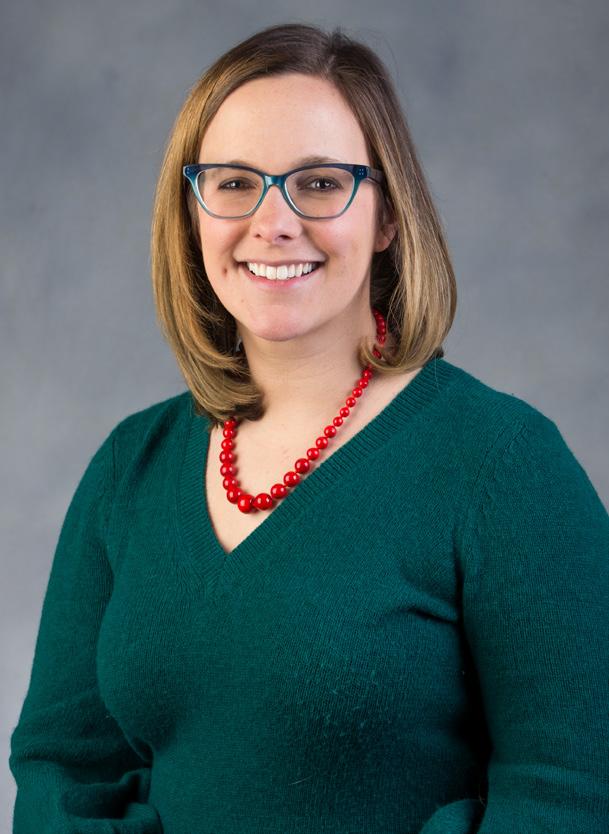
6 minute read
UNCHARTED WATERS: FINDING YOUR ORCHESTRA SEA LEGS DR. LISA MARTIN
Uncharted Waters: Finding Your Orchestra Sea Legs
Dr. Lisa Martin
In my sixth year as a K12 music educator, I accepted a position that involved teaching equal parts middle school band and middle school orchestra. As a self-identified “band person,” it had been ‘more than a minute’ since I had any formal instruction on string pedagogy, and my own string performance skills were less than stellar.
In most music teacher preparation programs, preservice teachers select an area of pedagogical focus. For example, one might specialize in band, orchestra, choir, or classroom general music. However, in the state of Ohio, approximately 80% of music teachers report teaching in at least one area of music that is outside their primary specialization (Butler, 2022), and this trend is evident elsewhere, as well (Baker, 2010). In other words, regardless of specialization, it is quite possible that job responsibilities will include content outside one’s primary area of expertise. While this can initially feel like an intimidating situation, there are a range of ways one can meet such a challenge. The following article reflects strategies I found helpful when teaching middle school orchestra for the first time. Although my experience was centered on strings, many of these ideas are certainly transferrable to any situation where one finds themselves with a teaching assignment outside their main focus area. OBSERVE MASTER TEACHERS
One of the more helpful strategies I employed was observing middle school orchestra teachers in my local area. The majority of these teachers were string specialists, so it was especially helpful to see how they approached tuning, bowholds, shifting, and additional string-specific content. Following these observations, I was able to ask questions about various teaching strategies, as well as about composers who wrote effectively for developing string musicians. It was through these conversations I discovered composers such as Soon Hee Newbold, Richard Meyer, and Doug Spata.
In order to facilitate such observations, consider approaching your administration for release time – these observations are certainly professional development after all! In instances where release time is not possible, ask master teachers if they might be willing to record their rehearsal for you to observe outside of school hours.
Beyond observing master teachers, it can be helpful to invite an experienced string music educator into your classroom to observe your practice and provide you with feedback. Doing so can spark a meaningful discussion around opportunities for growth in your practice.
Worth noting, it can also be useful to seek out other music teachers who have found themselves in the same position as you. For example, I gleaned many useful tips from a choral specialist friend who had been assigned to teach several sections of middle school orchestra at a school down the road. Such teachers can be a tremendous resource for learning practical strategies, as well as what not to do!
TAKE LESSONS
It is certainly easier to teach something that you know how to do yourself! As access to resources allows, consider taking private lessons on one or more string instruments. Should you teach in an area where these options are limited, explore opportunities over Zoom, or find a quality series of educative videos online that can help guide your development.
While modeling on a string instrument is a useful goal, it is important that any modeling you provide represents the quality you expect of your students. For me, although I took some lessons, a left wrist injury (and subsequent surgery) limited my ability to demonstrate effectively. As such, I often recruited student leaders in class to model musical lines. These leaders were also helpful as peer teachers throughout the school year.
SECTIONAL HELP
In addition to considering lessons for yourself, it can be especially beneficial for your students to be connected with specialists on their instrument. If resources allow, invite guest teachers to your class to help with sectionals. These guest teachers could be amateur or professional performing musicians from the area, retired music teachers, or even teachers in training. For example, if a college or university music education program is nearby, it is possible that undergraduate music education students may be able to visit your classroom as a complement to their practicum requirements.
When inviting a guest teacher into your classroom, you can play along with your students to improve your own skills on a given instrument. Alternatively, you can simply observe the guest teacher’s approach, while taking in some of their content expertise. These guest teachers can also provide helpful insights on bowing choices and other considerations in the classroom.
SEEK OUT OPPORTUNITIES
There is a wealth of opportunities to learn more about string performance and pedagogy. The American String Teachers Association (ASTA) website has a page dedicated exclusively to teaching resources and assessment tools (Teaching resources, n.d.). ASTA also holds a national conference each year, with various professional development sessions that can help supplement your skills and knowledge. Here in Ohio, the Ohio String Teachers Association (OSTA) also offers options for professional development. This October, for example, there is a fall workshop at Upper Arlington High School, where participants will explore topics such as instrument repair and technology resources. Continue to add to your toolbox by seeking out professional development that addresses any gaps you feel you might have.
BE TRANSPARENT
Especially in my first year of teaching orchestra, I embraced transparency with my students regarding where I had opportunities to learn as a string teacher. While it was not always easy to be vulnerable in this way, the students appreciated when I was clear about what I felt confident with and where I could grow in my knowledge and skills. Demonstrating this vulnerability also opened a safe space for students to feel secure in sharing their own strengths and opportunities for growth, shaping a more empathetic classroom overall.
Ultimately, teaching strings helped me grow
as a music educator in so many ways. The challenge was initially intimidating, but the experience deepened my understanding of and appreciation for another essential area of our field. Through seeking out others’ expertise, exploring mentorship, and tackling professional development opportunities, educators can effectively address the needs and musical development of students in a range of content areas. REFERENCES
Baker, W. R. (2010). A descriptive analysis of the academic training experiences and teaching responsibilities of high school music educators within the state of Florida [Unpublished doctoral dissertation]. Florida State University.
Butler. T. (2022). Ohio music teachers’ perceptions of undergraduate coursework [Unpublished Master’s thesis]. Bowling Green State University.
Teaching resources (n.d.). American String Teachers Association. Retrieved September 13, 2022.
Dr. Lisa Martin currently serves as Associate Professor of Music Education at Bowling Green State University, where she teaches undergraduate and graduate music education courses. Prior to her appointment at BGSU, she taught middle school band and orchestra in Illinois and Colorado. Her research interests include music teacher identity development, assessment practices in music education, and music in charter schools.
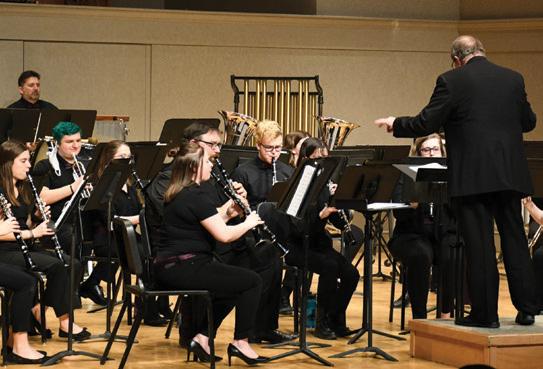
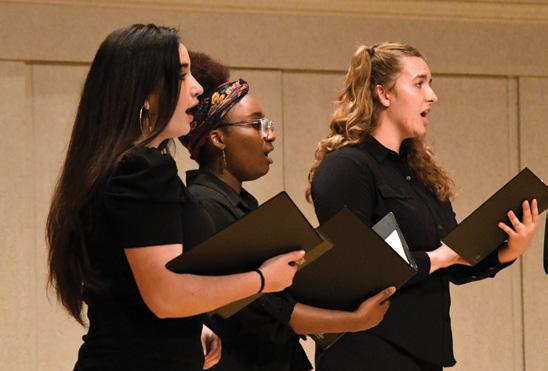
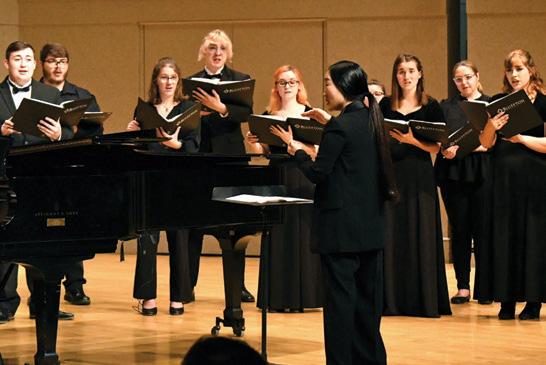
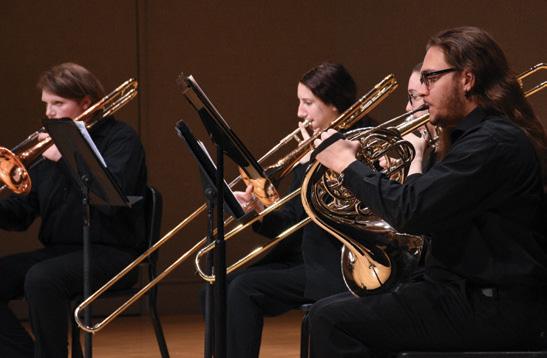
Play an instrument? Sing in a choir? AUDITION FOR SCHOLARSHIPS
before march 31
Scholarships available for music majors and non-music majors, ranging from $1,000-$8,000, renewable for four years!
Visit www.bluffton.edu/music for application and requirements.
CONTACT US TO LEARN MORE!
Brianna Ferris 419-358-3254 ferrisb@bluffton.edu










